
Roots
The very notion of our hair, particularly its textured expressions, often begins with an intuitive sense, a feeling rather than a strict scientific understanding. We perceive its presence, its character, and its changing disposition, yet its underlying life, the intricate mechanisms that govern its presence and growth, often remain unseen, operating in quiet dedication beneath the surface. It is within this veiled world that we find the true beginnings of its story, a narrative that stretches back to the cellular level, where each strand begins its remarkable journey. This deep, foundational insight offers a lens through which to view even seemingly distant factors, such as the consistent rhythms of our sleep, as contributors to its well-being.
Understanding the intrinsic biological cycles that govern hair is a step toward appreciating its connection to our entire bodily system. Just as the earth turns and seasons shift, so too does each hair follicle follow its own cyclical path, a silent, persistent ballet of growth, rest, and renewal. This inherent rhythm is not merely a metaphor; it is a biological reality, shaped by the body’s internal clocks.

The Hair Follicle A Miniature Organ
Consider the hair follicle as a self-contained, bustling micro-factory, a miniature organ deeply embedded within the skin. Each follicle is a dynamic structure, far more complex than a simple tube from which hair emerges. It houses specialized cells, a rich blood supply, and nerve endings, all working in concert to produce the hair fiber we see and touch.
For textured hair, this intricate design is further refined, contributing to the unique curl patterns, coiling, and density that distinguish it. The shape of the follicle itself, particularly its curvature, plays a significant role in determining the curl type, from gentle waves to tightly coiled strands.
Within this tiny biological marvel, different compartments carry out specific tasks. The dermal papilla, a cluster of mesenchymal cells at the follicle’s base, acts as a command center, sending signals that orchestrate hair production. Surrounding it are the matrix cells, highly proliferative cells that divide rapidly to form the hair shaft. As these cells multiply and move upwards, they undergo a process of keratinization, hardening and dying to form the robust protein structure of the hair.
Each hair follicle operates as a tiny, self-contained biological system, its intricate design dictating the unique characteristics of textured hair.

Hair’s Unseen Rhythms
Hair does not grow continuously. Instead, it follows a distinct, genetically programmed cycle, a process that unfolds over months or even years. This cycle consists of three primary phases:
- Anagen ❉ This is the active growth phase, during which hair cells rapidly divide and the hair shaft extends from the follicle. The duration of this phase largely determines the ultimate length a hair can achieve. For scalp hair, this can last anywhere from two to seven years.
- Catagen ❉ A brief, transitional phase, lasting only a few weeks. During this period, hair growth ceases, and the follicle shrinks, detaching from the dermal papilla.
- Telogen ❉ The resting phase, which typically lasts around two to four months. The hair remains in the follicle but is no longer actively growing. At the close of this phase, the old hair is shed, making way for a new hair to begin its anagen journey from the same follicle.
Understanding these cycles is foundational to grasping how external and internal factors, including sleep, can influence hair health. A disruption to this delicate balance can lead to a premature shift from the growth phase to the resting or shedding phases, affecting density and overall hair vitality.
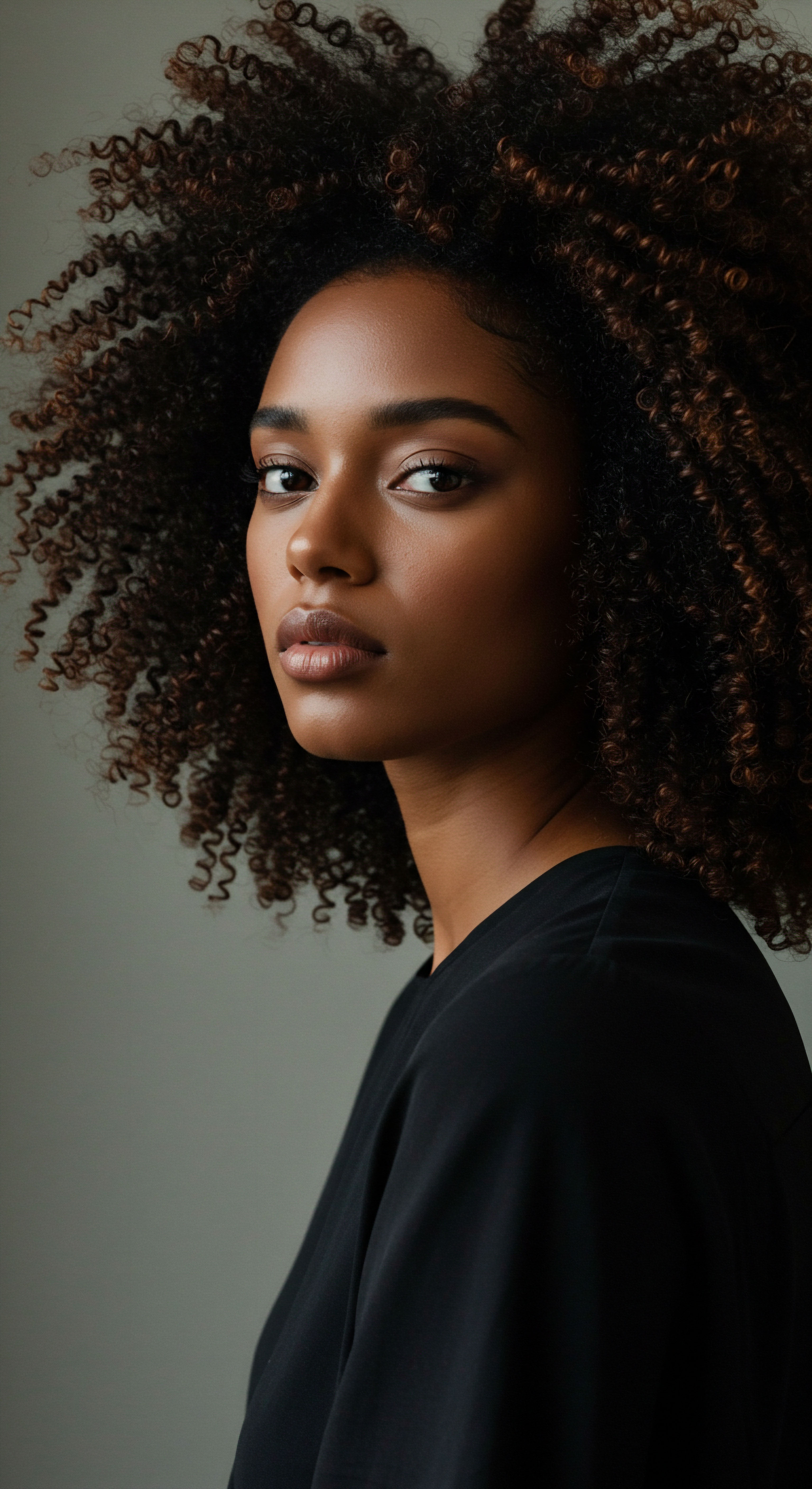
How Do Hair Cells Receive Nourishment?
For hair to grow, its cells require a constant supply of nutrients and oxygen. This vital delivery system relies heavily on the body’s circulatory network. Blood vessels surround the hair follicle, bringing in the building blocks necessary for cell division and protein synthesis. These include vitamins, minerals, and amino acids, the very components that construct the hair fiber.
Beyond direct nutrient supply, hormonal signals and various growth factors also play significant roles in regulating hair growth. These biochemical messengers influence the activity of the dermal papilla and matrix cells, dictating the pace and character of hair production. Any systemic disruption, whether from internal imbalances or external pressures, can ripple through this complex system, potentially affecting the quality and quantity of hair produced.

Ritual
Moving beyond the hidden machinery of hair’s beginnings, we step into the realm of lived experience, where daily rhythms and intentional practices shape the tangible reality of our strands. The question of whether consistent sleep routines can enhance textured hair growth invites us to consider the quiet hours of the night not as a mere pause, but as a period of profound restorative action for our bodies, including our hair. It beckons us to observe how the predictable cadence of our slumber might quietly contribute to the vitality we seek in our coils and curls. This section considers how mindful habits, particularly those surrounding sleep, become integral to the wellness of textured hair.
The concept of a “routine” for textured hair often conjures images of wash days, styling sessions, and product application. Yet, the most impactful routine might just be the one we keep in the dark, during those hours when the world quiets and our bodies mend. The gentle wisdom of tending to oneself, of honoring the body’s natural need for rest, extends directly to the hair that adorns us.

Sleep’s Silent Contributions to Hair Health
During sleep, the body is far from inactive. It engages in a sophisticated array of repair, regeneration, and growth processes. This restorative work extends to every cell, including those within our hair follicles.
The body’s internal clock, often referred to as the circadian rhythm, orchestrates many of these nocturnal activities. This rhythm dictates cycles of hormone release, cell division, and metabolic activity, all of which indirectly influence hair growth.
One significant aspect of sleep’s contribution is its role in regulating hormone levels. During deep sleep, the body releases growth hormones that are instrumental in cellular reproduction and repair. These hormones assist in maintaining hair follicles in their active growth (anagen) phase for extended periods. A deficit in quality sleep can disrupt the steady production of these vital hormones, potentially shortening the anagen phase and leading to increased shedding.
Sleep is a silent, restorative powerhouse for the body, where growth hormones essential for hair vitality are released.
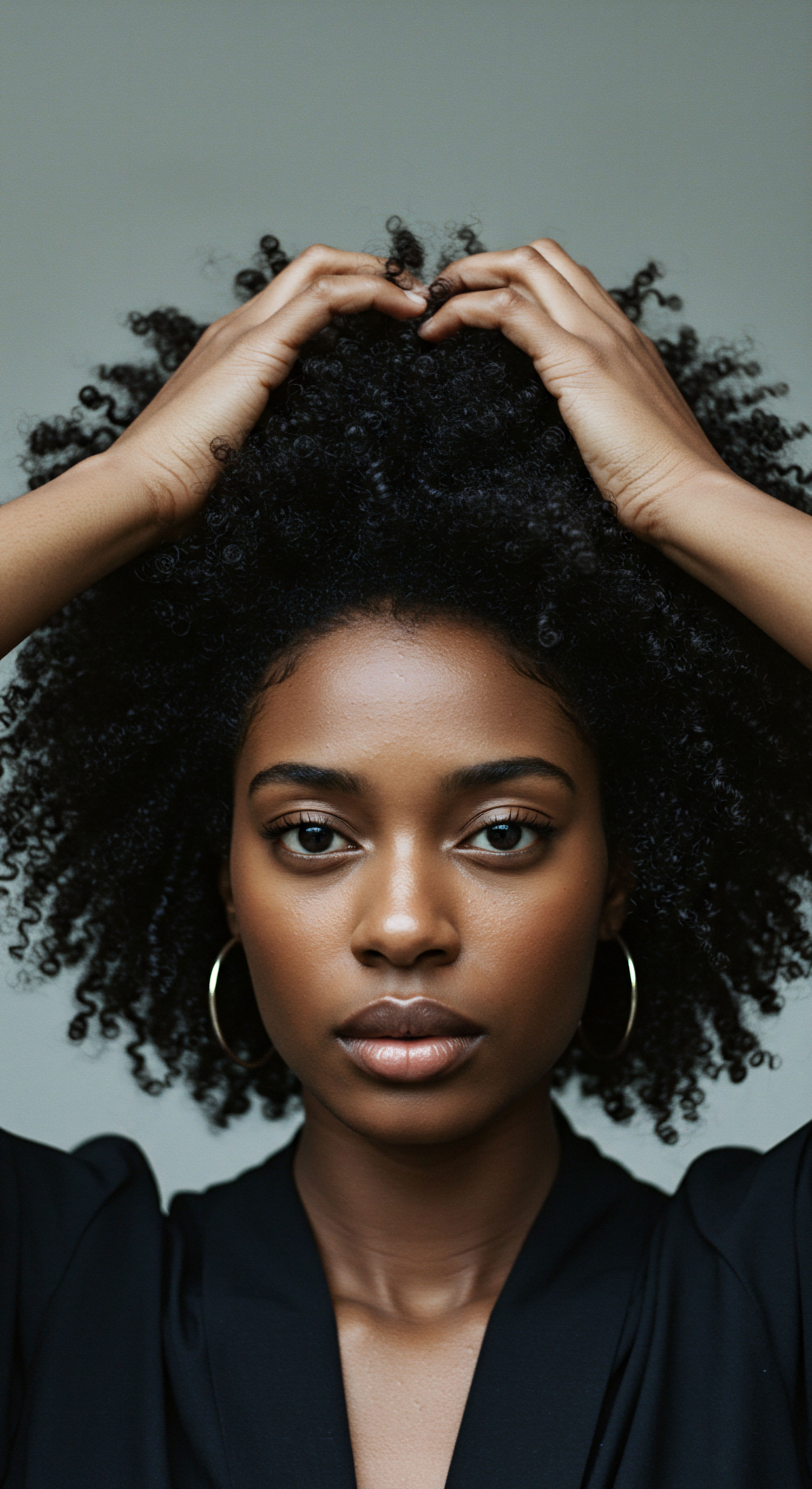
The Stress Connection
A common thread linking poor sleep to hair concerns is the body’s stress response. Insufficient or inconsistent sleep can elevate levels of cortisol, often termed the “stress hormone.” Chronic elevation of cortisol has been linked to various bodily disruptions, including an impact on the hair growth cycle. High cortisol can prematurely push hair follicles from the active growth phase into the resting (telogen) phase, leading to thinning and increased hair fall.
Furthermore, a compromised immune system, often a consequence of chronic sleep deprivation, can reduce the body’s capacity to ward off scalp conditions like dandruff or folliculitis. An unhealthy scalp environment, in turn, can impede healthy hair growth. Therefore, the consistent provision of adequate sleep serves as a quiet, yet powerful, buffer against these systemic stressors.
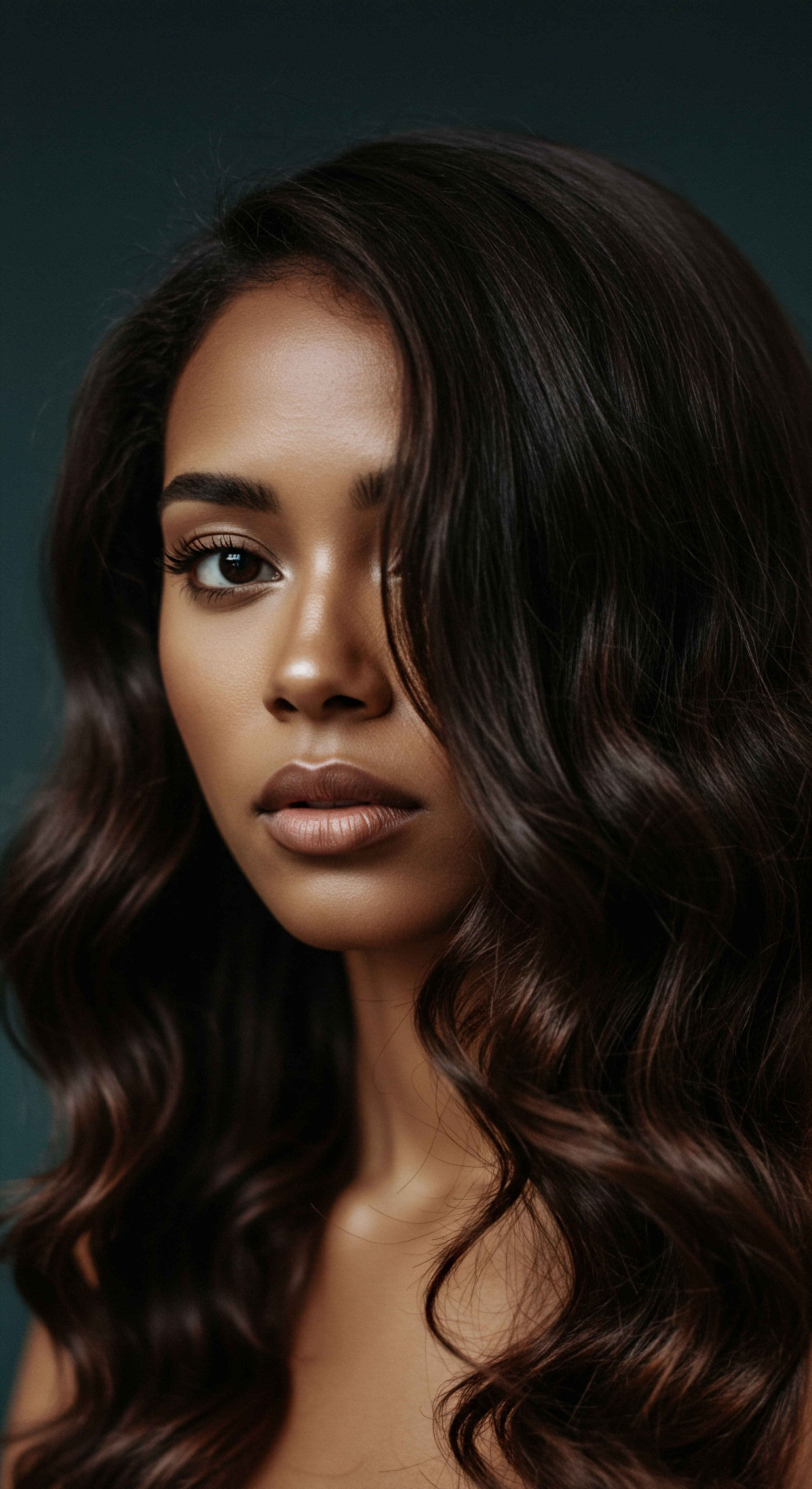
Nighttime Protection For Textured Hair
Beyond the internal biological processes, the physical protection of textured hair during sleep forms a critical part of a supportive routine. Textured strands, with their unique curl patterns and natural dryness, are particularly susceptible to friction and moisture loss against rough surfaces like cotton pillowcases.
Consider these practical measures for nighttime care:
- Silk or Satin Pillowcases ❉ These smooth surfaces allow hair to glide rather than snag, reducing friction that can lead to breakage, frizz, and tangles. They also absorb less moisture from the hair compared to cotton, helping strands retain their natural hydration.
- Bonnets or Scarves ❉ Wrapping textured hair in a silk or satin bonnet or scarf provides an additional layer of protection. This practice not only minimizes friction but also helps to preserve styled hair, extending the life of braids, twists, or stretched styles. It creates a micro-environment that keeps moisture locked in.
- Loose Hairstyles ❉ Before sleep, consider gently gathering hair into a loose pineapple, a few large braids, or twists. Avoiding tight styles or elastic bands that pull on the hairline can prevent tension-induced breakage and scalp discomfort.
These simple, consistent nighttime rituals contribute to hair preservation, allowing the internal restorative processes of sleep to occur without external damage. The combination of internal physiological support and external physical protection creates a truly comprehensive approach to nurturing textured hair growth.
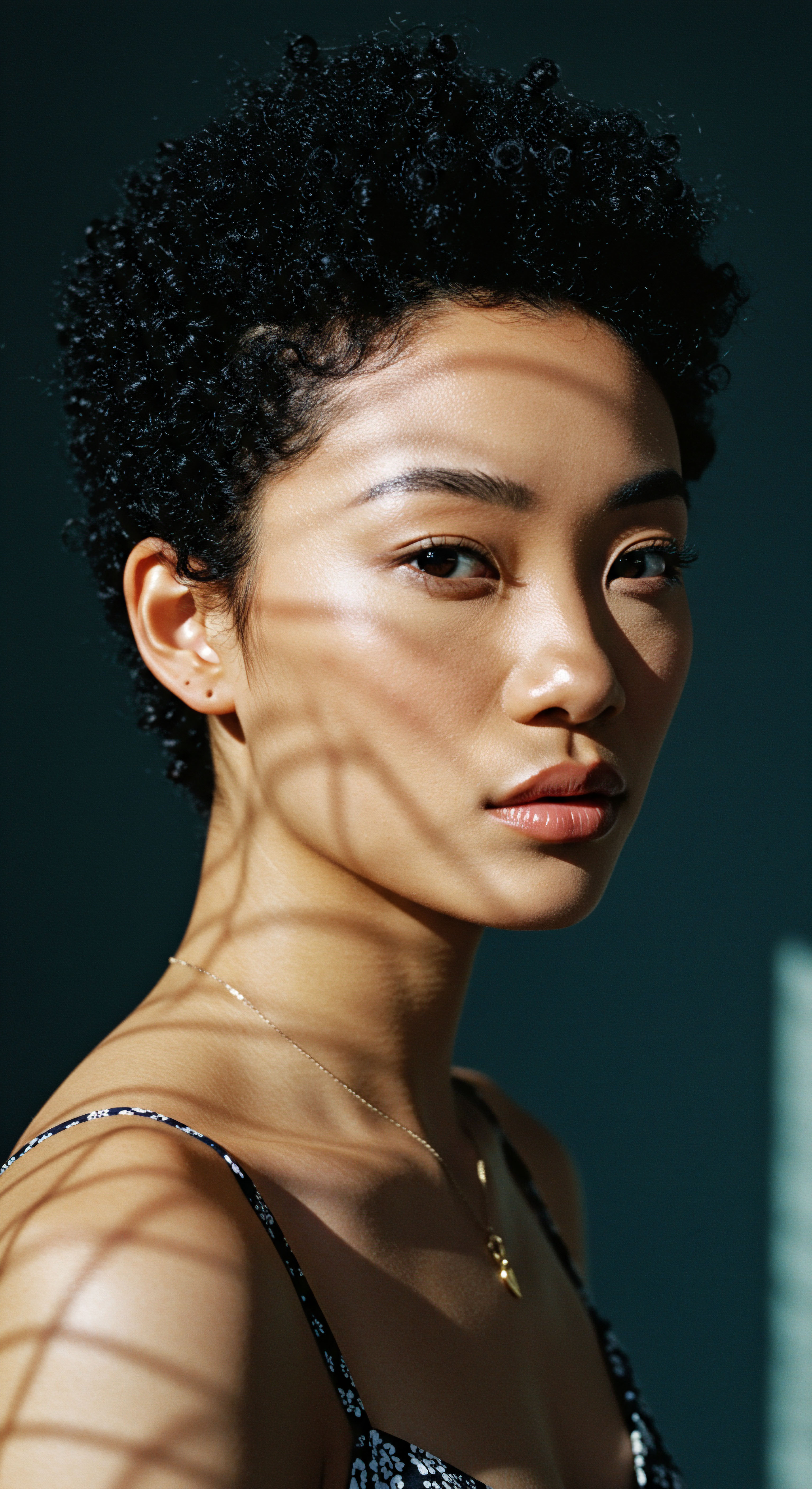
Relay
As we move from the foundational truths and practical wisdom of hair care, a deeper inquiry into the question of consistent sleep routines and textured hair growth invites us to consider the intricate biological conversations happening within us. This exploration reaches beyond simple cause-and-effect, touching upon the subtle yet profound interplay between our daily rhythms, cellular clocks, and the very life of our hair follicles. It beckons us to appreciate the body as a symphony of interconnected systems, where the quiet lull of night holds more influence than often acknowledged, shaping the very cellular architecture of our strands. Here, we step into the arena where science meets the subtle nuances of human biology, seeking to understand the ‘why’ behind the gentle practices we adopt.
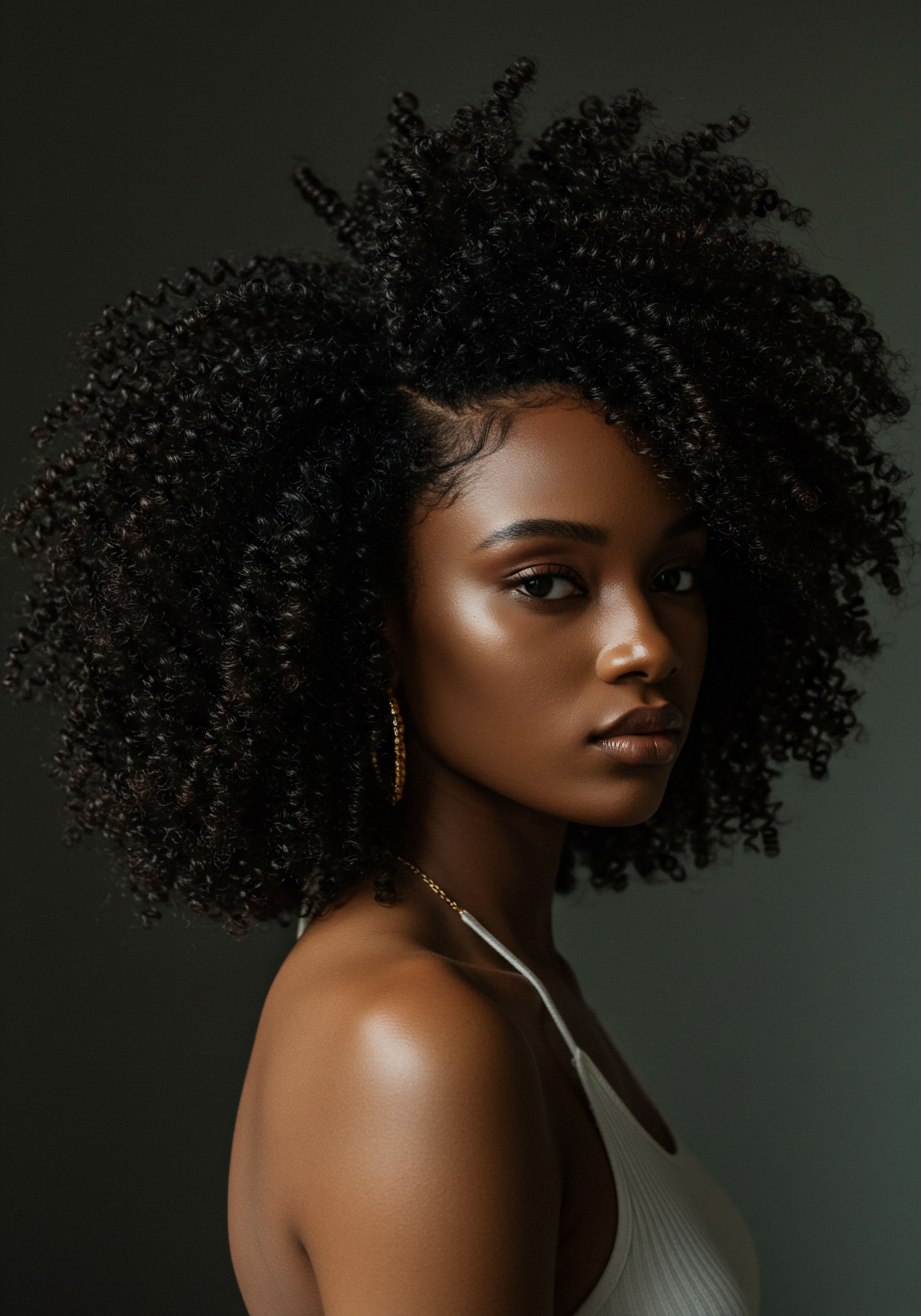
The Body’s Internal Clocks And Hair Growth
Our understanding of hair growth has matured beyond a mere appreciation of topical treatments or dietary supplements. We now recognize the profound orchestration of internal biological rhythms, particularly the circadian clock, in influencing the life cycle of the hair follicle. This internal timing system, synchronized with the 24-hour light-dark cycle, governs a vast array of physiological processes, from hormone release to cell division.
Research indicates that hair follicles possess their own functional circadian clocks. These peripheral clocks, while influenced by the central pacemaker in the brain (the suprachiasmatic nucleus), also respond to local environmental signals. The genes that regulate these internal clocks, often referred to as “clock genes” (such as BMAL1 and CLOCK), play a direct part in regulating the hair growth cycle.
A significant study by Plikus, Gay, Treutlein, Pasolli, and Fuchs (2012) published in ‘Cell’ provided compelling evidence that Circadian Clock Genes regulate hair follicle stem cell proliferation and differentiation. This research, conducted on mice, revealed that mutations in core clock genes, such as BMAL1, could lead to a delay in the progression of the hair growth phase. Specifically, it was observed that secondary hair germ cells, which contain precursor cells for the growing follicle, showed decreased levels of phosphorylated Rb and a lack of mitotic cells in the absence of properly functioning clock genes.
This suggests that the circadian clock mechanism influences the cell cycle progression of these critical stem cells, thereby affecting the initiation and advancement of the hair’s active growth phase. This finding underscores a direct, molecular link between our biological rhythms and the very genesis of new hair.

Hormonal Orchestration And Sleep’s Influence
Beyond the direct action of clock genes, sleep’s regularity also impacts the broader hormonal landscape, which in turn influences hair growth. The sleep-wake cycle is deeply intertwined with the production and regulation of several hormones that are pertinent to hair health.
Consider the role of Melatonin, a hormone widely recognized for its sleep-regulating properties. Melatonin production typically increases in darkness, signaling the body to prepare for rest. Beyond its sleep function, melatonin has also been shown to influence hair growth.
Topical applications of melatonin have been explored as a potential treatment for certain types of hair thinning, suggesting a direct effect on hair follicles. A consistent sleep schedule supports the natural, rhythmic release of melatonin, potentially optimizing its positive effects on hair follicle activity.
Conversely, irregular sleep patterns can disrupt the delicate balance of stress hormones. As previously mentioned, elevated cortisol levels, often a consequence of chronic sleep deprivation, can prematurely shift hair follicles into a resting phase, leading to increased shedding. The body’s physiological response to consistent, restful sleep provides a more stable hormonal environment, allowing hair follicles to proceed through their natural cycles with less interruption.

The Cellular Renewal Connection
Sleep is a period of heightened cellular repair and detoxification throughout the body. During these hours, cells work to mend damage incurred during waking hours and to clear metabolic byproducts. For rapidly dividing cells, such as those in the hair matrix, this regenerative window is especially important.
A lack of sufficient, quality sleep can compromise these cellular repair mechanisms. This can lead to a build-up of cellular stress and a reduced capacity for the hair follicle cells to perform their functions optimally. When the foundational cells of the hair follicle are unable to fully recover and replicate efficiently, the resulting hair fiber may be weaker, thinner, or the growth cycle itself may be curtailed.
The systemic effects of consistent sleep extend to circulation and nutrient delivery. During sleep, the body’s systems can operate with less demand from conscious activity, potentially allowing for more efficient blood flow to peripheral areas, including the scalp. This consistent delivery of oxygen and nutrients to the hair follicles is a silent yet powerful contributor to their sustained vitality and productive growth.
| Aspect of Sleep Circadian Rhythm Alignment |
| Influence on Hair Growth Supports hair follicle stem cell activity and cycle progression. |
| Mechanism Clock genes (BMAL1, CLOCK) directly regulate cell division and differentiation within the follicle. |
| Aspect of Sleep Hormone Regulation |
| Influence on Hair Growth Optimizes melatonin production, reduces stress hormone impact. |
| Mechanism Consistent sleep aids in the rhythmic release of melatonin; reduces chronic cortisol elevation. |
| Aspect of Sleep Cellular Repair |
| Influence on Hair Growth Aids in regeneration and detoxification of hair follicle cells. |
| Mechanism Body's restorative processes during sleep allow cells to mend damage and function efficiently. |
| Aspect of Sleep Nutrient Delivery |
| Influence on Hair Growth Ensures steady supply of building blocks to the scalp. |
| Mechanism Improved systemic circulation during restful periods enhances blood flow to hair follicles. |
| Aspect of Sleep Consistent sleep routines create a supportive internal environment for textured hair vitality. |

Reflection
As we consider the quiet rhythms of our nightly rest and their surprising connection to the vibrant life of our textured hair, a deeper appreciation settles. The journey from cellular mechanisms to daily rituals reveals a simple yet profound truth ❉ our bodies are wonderfully interconnected, and the seemingly separate aspects of our well-being are, in fact, deeply intertwined. The pursuit of healthy, flowing strands becomes not just about external products or techniques, but about a gentle listening to the body’s innate wisdom, particularly its need for consistent, restorative sleep. This understanding invites a more holistic approach to hair care, one that honors the body’s internal choreography as much as its outward presentation.

References
- Plikus, M. E. Gay, D. L. Treutlein, H. R. Pasolli, H. A. & Fuchs, E. (2012). Circadian clock genes regulate hair follicle stem cell proliferation and differentiation. Cell, 149(5), 1113-1123.
- Paus, R. & Cotsarelis, G. (2001). The biology of hair follicles. New England Journal of Medicine, 345(7), 449-457.
- Sinclair, R. (2013). Fast Facts ❉ Disorders of the Hair and Scalp. Karger Publishers.
- Montagna, W. (1957). The Biology of Hair Growth. Academic Press.
- Stenn, K. (2016). Hair ❉ A Microhistory. Pegasus Books.
- Paus, R. & Foitzik, K. (2004). In ❉ Hair and Scalp Diseases. Marcel Dekker.
- Tobin, D. J. (2006). Hair in toxicology ❉ an important biomarker. Elsevier.
- Messenger, A. G. & de Berker, D. A. (2007). The Hair Follicle. In ❉ Rook’s Textbook of Dermatology. Blackwell Publishing.